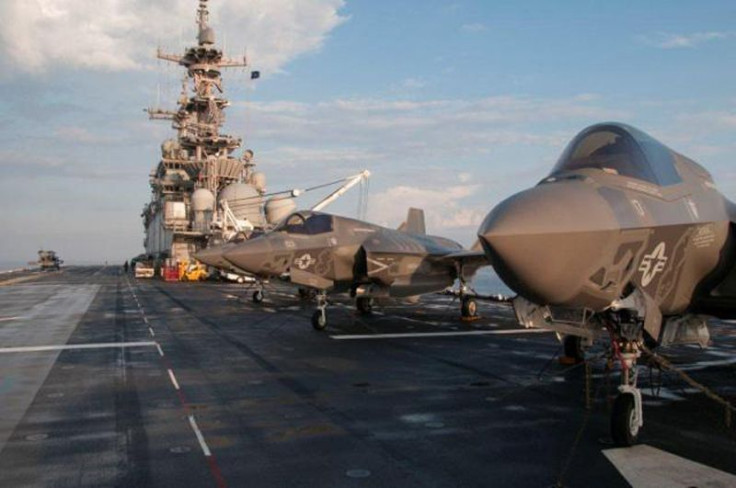Pentagon Reduces F-35 Joint Strike Fighter Production Amid Defense Budget Cuts

The Pentagon is set to cut 20 F-35 Joint Strike Fighters from the 893 it was due to build over the next five years, according to a high-ranking military member of the Lockheed Martin management team. While the figure is insignificant given that the U.S. is to build more than 2,000 through 2055, the reduction adds another layer of intrigue to an aircraft that has suffered from production glitches and manufacturing delays, and has been heavily criticized by Congress for its overall $1.5 trillion price tag.
The overall reduction will also deal a blow to the U.S. military branches and international partners, who will see the price per F-35 increase as a result of the reduction, according to a Defense News report.
However, F-35 Chief Lt. Gen. Chris Bogdan downplayed the cost increase, saying it was less than 1 percent for each unit. “I can't tell you the price difference between 893 and 873 airplanes; I’m not sure I can even measure that,” Bogdan said. “It’s ... way less than 1 percent in overall price to everybody.”
At the current price, the F-35 comes in at between $85 million and $116 million per unit. This means that the Pentagon’s reduction will save between $1.7 billion and $2.3 billion.
The price structure has yet to account for Canada's pending withdrawal from the F-35 program, which will likely mean that all customers will have to absorb the cost of 65 units, or somewhere between $5.5 billion and $7.5 billion. Canadian Prime Minister Justin Trudeau said prior to winning the election in late 2015 that Canada did not require the advanced stealth aircraft and would be searching for alternatives.
Among other concerns, the U.S. Air Force is also deciding if it will delay its version of the F-35 because of software glitches and reports that pilots weighing under 136 pounds have a higher chance of dying after ejection from the aircraft than those who are heavier.
“The bottom line is, they have to get into the realm where the seat allows that weight of a pilot less than 136 pounds [to] safely eject out of the airplane,” Maj. Gen. Jeffrey Harrigian, F-35 integration office director, told Defense News. “They found some areas that, particularly at slower speeds, they were concerned about, so that drove the restriction that we have right now.”
© Copyright IBTimes 2024. All rights reserved.






















